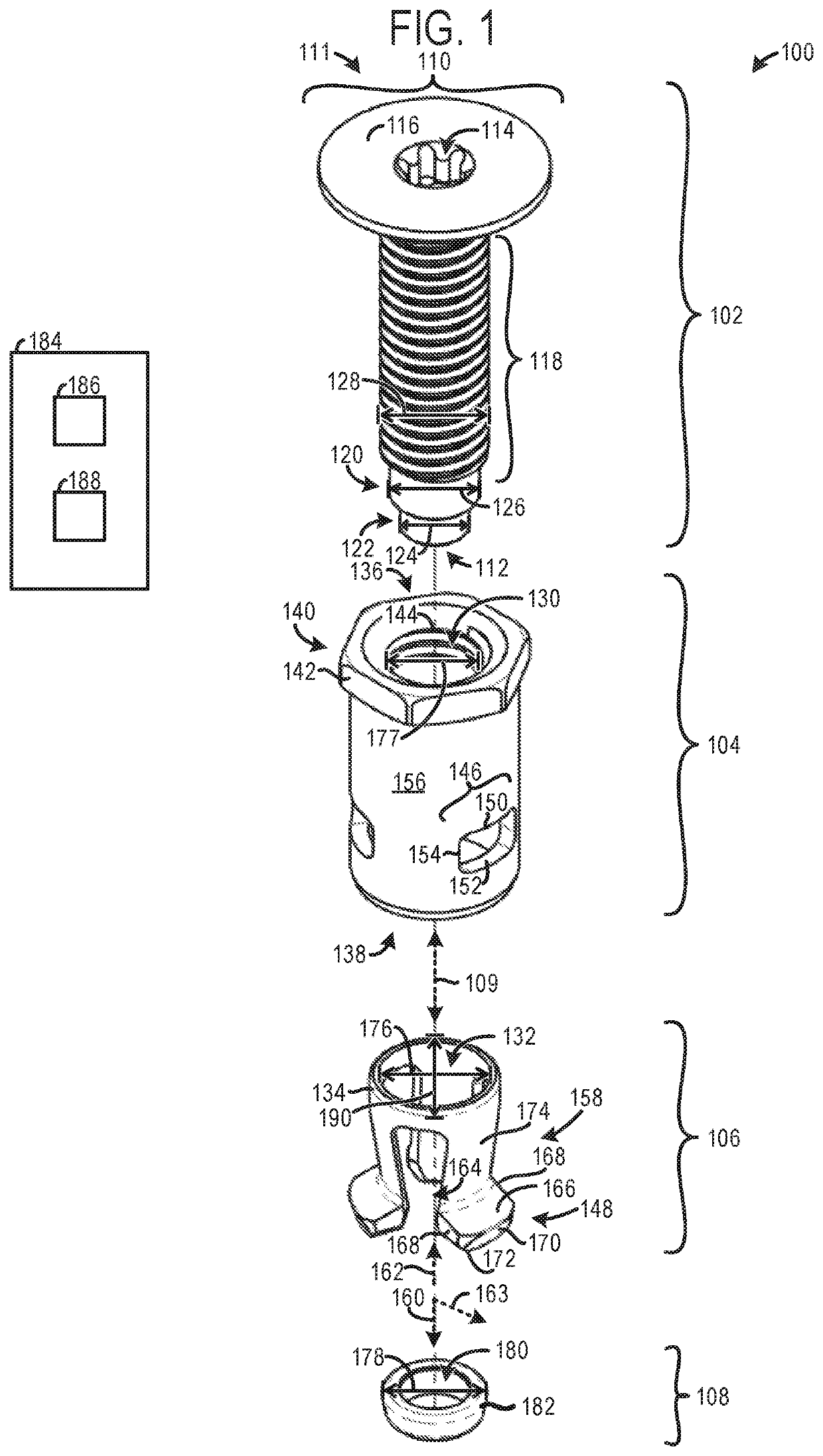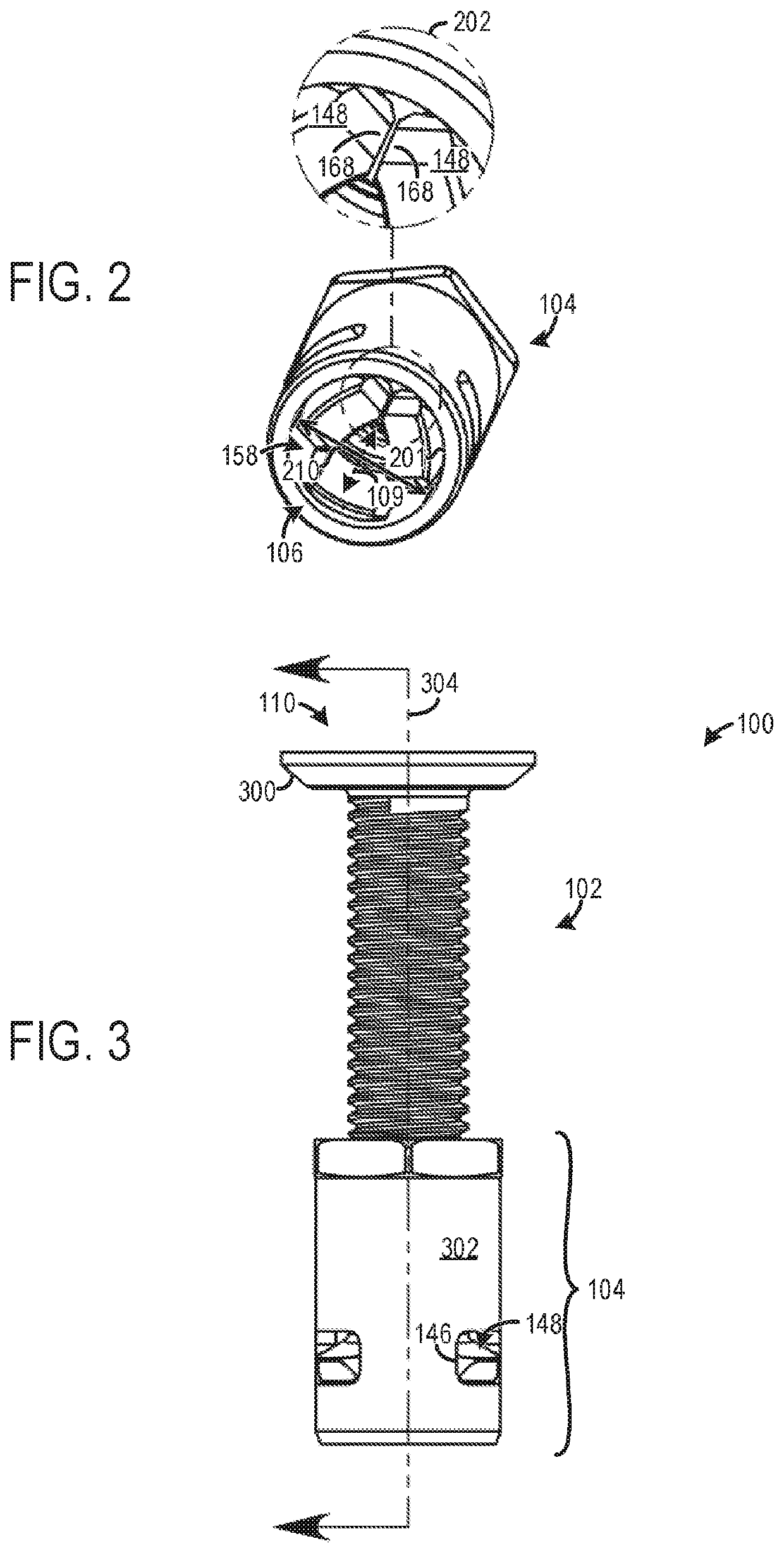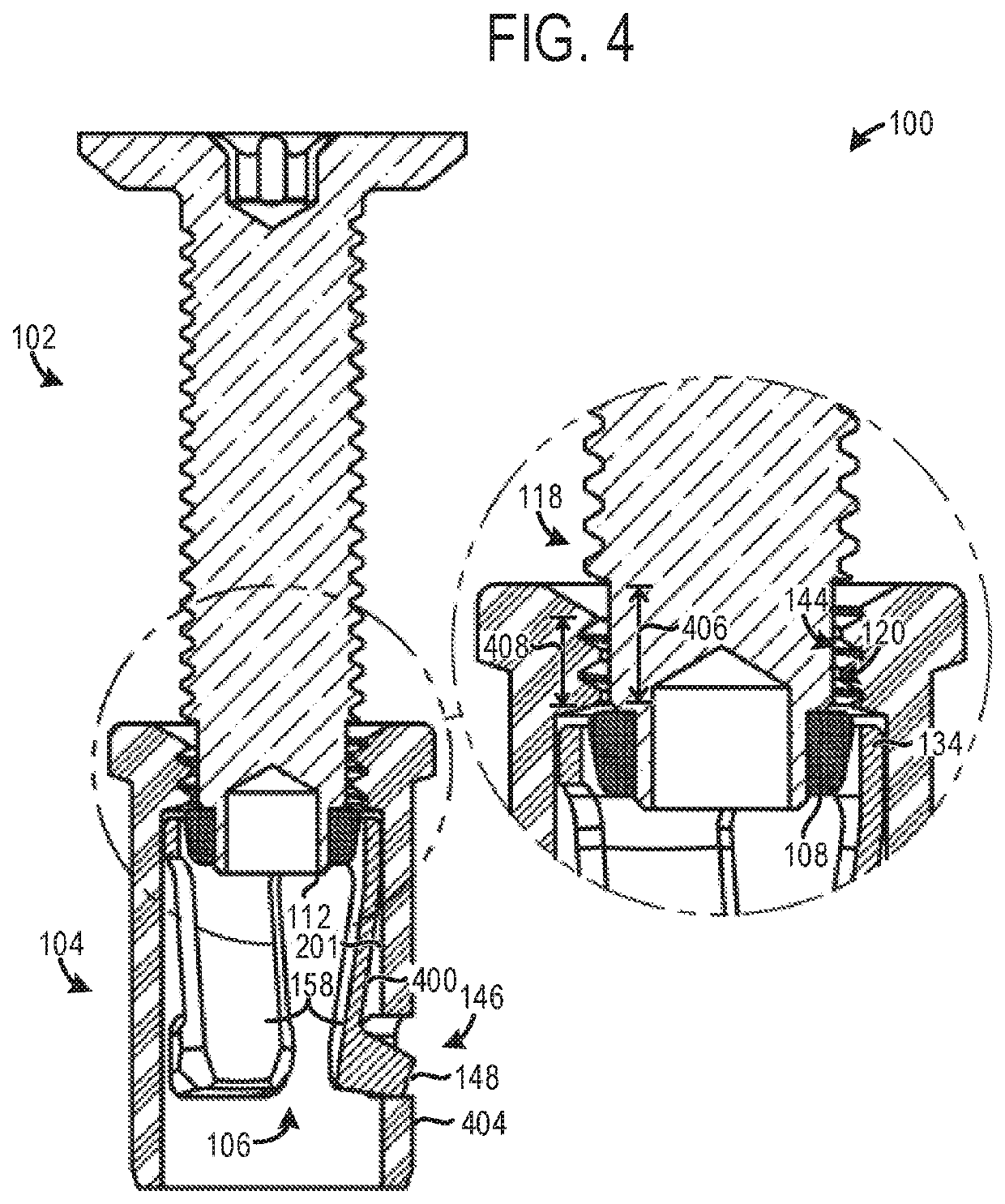Fastener system
a technology of fastener and flexible leg, which is applied in the direction of fastening means, screws, dowels, etc., can solve the problems of affecting the desired function of flexible leg, affecting affecting the operation of the flexible leg. , to achieve the effect of increasing the modularity of the aircraft's cabin, increasing the adaptability of aircraft manufacturing processes, and increasing manufacturing adaptability
- Summary
- Abstract
- Description
- Claims
- Application Information
AI Technical Summary
Benefits of technology
Problems solved by technology
Method used
Image
Examples
Embodiment Construction
[0034]The following description relates a fastener system designed to decouple shear stresses from a collet body and provide clamping engagement to targeted structures. Decoupling of the shear stresses from the collet body enables quick, efficient, and unobstructed engagement and disengagement of clamping arms in the system. In particular, the fastener system is designed to decouple shear forces from a weaker section (i.e., cantilever legs) and place the same shear forces onto a much stronger section (i.e., a sleeve). As a result, the fastener system has excess capacity, enabling the system to carry additional shear forces. The fastener system includes a collet body that fits within a sleeve. The collet body is provided with feet on the end of cantilever legs extending downward from a crown. When the fastener system is in an engaged configuration and a stud is threaded into the collet body and sleeve, the feet protrude through openings in the sleeve. The sleeve protects the collet b...
PUM
 Login to View More
Login to View More Abstract
Description
Claims
Application Information
 Login to View More
Login to View More - R&D
- Intellectual Property
- Life Sciences
- Materials
- Tech Scout
- Unparalleled Data Quality
- Higher Quality Content
- 60% Fewer Hallucinations
Browse by: Latest US Patents, China's latest patents, Technical Efficacy Thesaurus, Application Domain, Technology Topic, Popular Technical Reports.
© 2025 PatSnap. All rights reserved.Legal|Privacy policy|Modern Slavery Act Transparency Statement|Sitemap|About US| Contact US: help@patsnap.com



